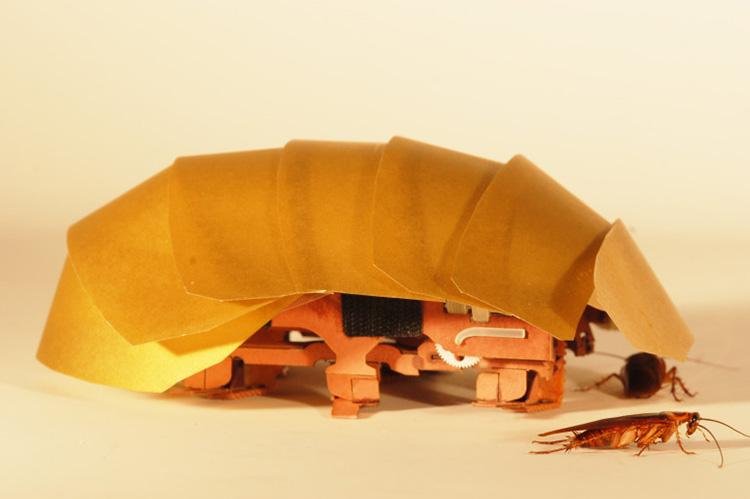The prototype CRAM robot developed by UC Berkley researchers is inspired by cockroaches, and can squeeze through tight spaces. Photo courtesy PolyPEDAL Lab, UC Berkeley
ADELPHI, Md., Feb. 15 (UPI) -- A crawling robot that mimics a cockroach's ability to maneuver in confined spaces has been developed by University of California-Berkeley researchers.
The palm-sized robot is called the CRAM, or "compressible robot with articulated mechanisms." It was developed by the university researchers with support from the U.S. Army Research Laboratory.
CRAM is an origami-style, soft, legged robot that can move around rapidly in both open and confined spaces. It is a prototype and researchers see great possibilities for this insect-inspired technology, which is part of the Army Lab's Collaborative Technology Alliance with industry and academia.
"The research at UC Berkeley is exploring bio-inspired mobility and control methods that can be applied to future Army autonomous robotic systems," said Dr. Brett Piekarski, cooperative-agreement manager of the alliance.
"Over the course of the program, they have performed research in many areas from how insects can maneuver and transition over and through varying surfaces, to how lizards use their tails to maintain stability over rugged terrain or to maneuver rapidly, to bio-inspired self-righting technologies that have led to a joint project with ARL, and to the focus of the recent paper on how cockroaches maneuver through very small cracks."
The report on CRAM by UC Berkeley researchers Dr. Kaushik Jayaram and Dr. Robert Full is published in the latest edition of Proceedings of the National Academy of Sciences.
In related research the Army has developed software that analyzes and evaluates any given robot's ability to right itself after tipping over.















